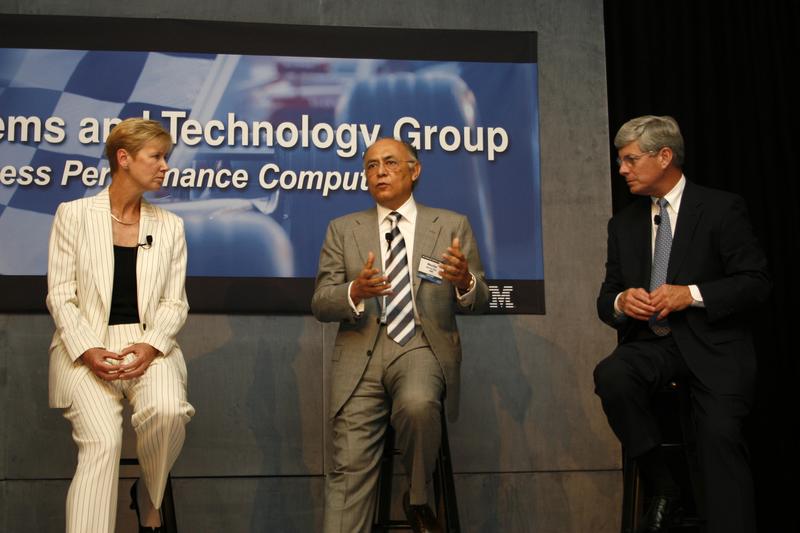IBM servers go green
As customers spend more on power and cooling in their data centres than they do on computers, IBM partners with AMD to produce a range of low power, low heat blade servers and support technologies

With temperatures in New York reaching record highs - and city mayor Michael Bloomberg declaring a state of emergency - IBM picked a good day to launch a new range of energy-efficient servers.
The machines, powered by AMD Opteron processors, deliver up to 21 per cent more computing performance for the same power consumption as previous IBM servers, the company claims. According to IBM, some customers now spend more on power and cooling in their data centres than they spent on buying the equipment in the first place.
IBM's response is to position the refresh to their server line as "energy-smart business computing systems". The new range includes two blade servers: the LS 21, a two-way enterprise class blade optimised for performance computing and a similar model, the LS41, which can scale to a four-way unit by adding an additional card to the blade unit.
The blade servers were announced alongside three new System x servers: the mid-market x3755, the "performance" x3655 and the x3455, which is a high performance computing node aimed at clustered applications.
IBM further claims that its new blade servers are particularly energy-efficient, delivering up to 40 per cent more computing performance per Watt than competing systems.
Rival HP launched its own BladeSystem c-Class range of lower power and lower heat servers in June claiming acquisition cost savings of up to 41 per cent; data centre facilities cost savings of up to 60 per cent; and initial system setup time cost savings of up to 96 per cent.
According to Bernard Meyerson, chief technologist for IBM's systems and technology group, the AMD processors run more efficiently than competing CPUs from rival Intel. The Opteron runs at 68 Watts, against around 90 Watts for comparable Intel units.
Get the ITPro daily newsletter
Sign up today and you will receive a free copy of our Future Focus 2025 report - the leading guidance on AI, cybersecurity and other IT challenges as per 700+ senior executives
IBM claims other advantages for its systems. Sharing components such as network interfaces and I/O between all the blades in a chassis makes blade-based systems inherently more efficient than rack-dense servers.
IBM also says that it has paid additional attention to components such as power supplies. Meyerson claims 91 per cent efficiency for the power units in IBM BladeCenter against around 70 per cent efficiency for a typical server power supply.
"With a typical power supply, if you put in 1000 Watts of AC you get out 700 watts of 12-volt DC," he said. "And those 300 Watts don't really disappear: they come out as heat. With our blades you have 91 per cent efficiency, so you only have to get rid of 90 Watts."
Power efficiency is an increasingly important consideration for IT buyers, analysts say. Rising energy costs, as well as data centres literally running out of power, are set to boost demand for IBM's machines.
"Power is now high, if not number one, on the CIO agenda, says industry analyst Joe Clabby of Clabby Analytics. "They have to get their power use under control and that will force decisions on whether to move to a new architecture in order to reduce operating costs."
IBM also confirmed it would offer a water-cooled radiator that will fit on the back door of a rack cabinet.
The argument is that water is a much more efficient way of cooling than air. "Air is a lousy way of cooling things if you are dealing with large amounts of heat," said Meyerson.
-
 Bigger salaries, more burnout: Is the CISO role in crisis?
Bigger salaries, more burnout: Is the CISO role in crisis?In-depth CISOs are more stressed than ever before – but why is this and what can be done?
By Kate O'Flaherty Published
-
 Cheap cyber crime kits can be bought on the dark web for less than $25
Cheap cyber crime kits can be bought on the dark web for less than $25News Research from NordVPN shows phishing kits are now widely available on the dark web and via messaging apps like Telegram, and are often selling for less than $25.
By Emma Woollacott Published